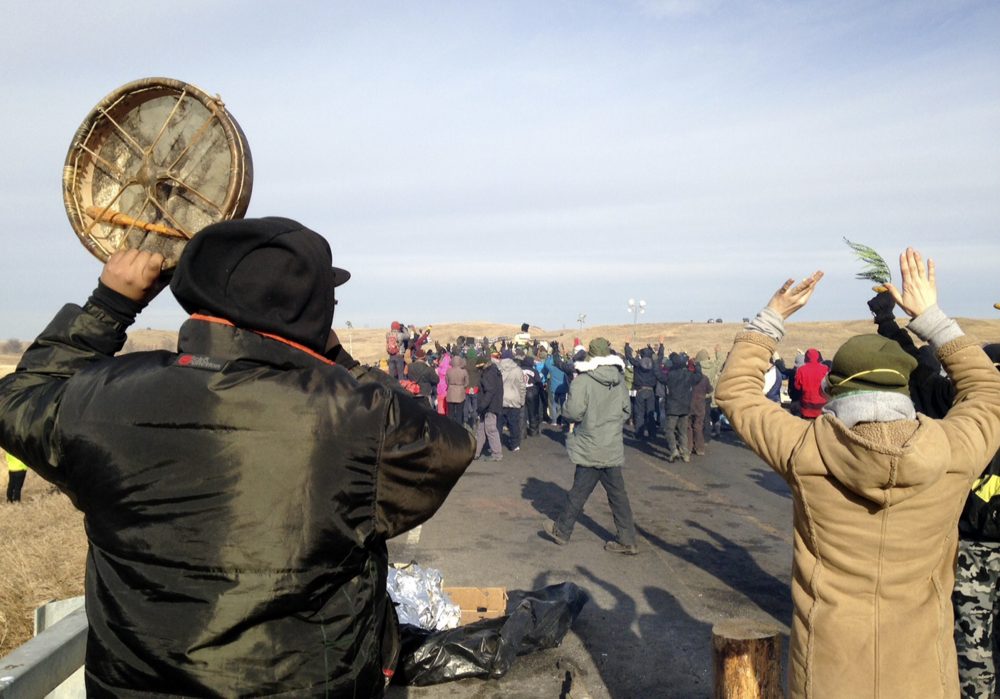Advertisement
Standing Rock Protesters Vow To Stay Despite Hypothermia, Violent Clashes

Police at the Standing Rock Indian Reservation are defending their decision to spray protesters with water in subfreezing temperatures during a clash late Sunday and early Monday over the Dakota Access Oil Pipeline. Twenty-six people were hospitalized and hundreds more reported injuries including hypothermia.
Activists and members of local indigenous groups led by the Standing Rock Sioux Nation have been camped out at the pipeline's proposed construction site since April.
Here & Now's Peter O'Dowd speaks with Linda Black Elk (@lindablackelk), an ethnobotanist at Sitting Bull College in Fort Yates, North Dakota. She's a member of the Standing Rock Medic & Healer Council, a volunteer group of doctors and tribal healers that assisted injured protesters on Monday.
This segment aired on November 24, 2016.